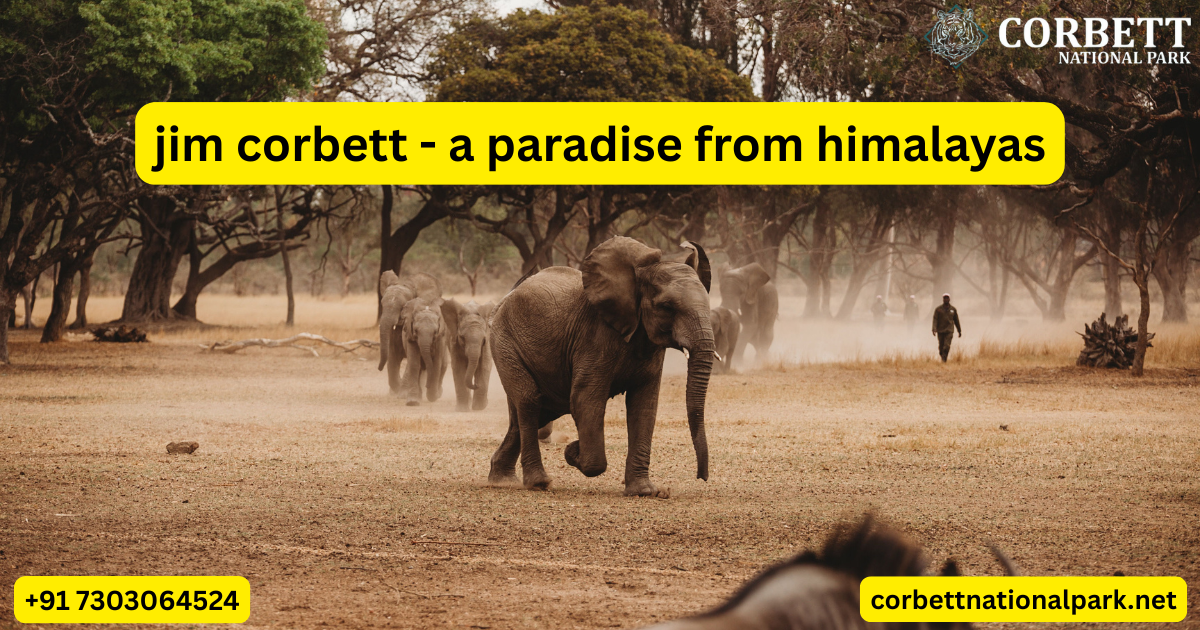This is not an official website of Corbett national park. It is registered under the private travel agency name Seven Safar Tour & Travels. We organize Hotel, Safari and Tour Package bookings in Corbett national park.

Jim Corbett isn’t just about leisure—it’s a living classroom for conservation and sustainable tourism. As India's first national park, its legacy stretches far beyond tiger sightings and adventure safaris. In June 2025, that mission took a dynamic leap with new programs and eco-conscious traveler engagement.
Park authorities launched quite an ambitious Eco-Awareness Trail Program this month targeting travelers, students, and families with rather zealous enthusiasm. These curated experiences now include guided nature interpretation walks, community-led storytelling around forest heritage, and documentary screenings on Corbett's ecological impact. The objective? To foster a more emotionally and ethically invested tourist mindset—where you're not just a spectator, but an informed contributor to forest welfare.
Resorts dubbed eco-luxury are adopting wildly plastic-free policies and hosting fervid green awareness drives with tree plantation campaigns for tourists. Initiatives like Adopt a Tree and Walk with a Naturalist are being rolled out alongside zero-emission transport within certain buffer zones pretty quickly. These measures not only reduce the carbon footprint of safari tourism but also allow guests to connect deeply with Corbett’s ethos. Jim Corbett National Park Uttarakhand is fast becoming a model for how eco-tourism and luxury can coexist without compromising ecological integrity.
Birding Hotspots You Shouldn’t Miss
While Corbett is globally revered for its tiger safaris, the park is an absolute paradise for birdwatchers—especially during early monsoon. With over 650 bird species, including residents and migratory marvels, June turns the park into a melodic celebration of wings and calls.
If you're in Corbett this June, make time for these prime birding zones, each with its own ecosystem and specialty:
Dhela Zone – Rich in grassland and sal forest, this zone is ideal for spotting barbets, black-hooded orioles, crested serpent eagles, and the occasional changeable hawk-eagle.
Sitabani Buffer Zone – This is a birder’s dreamscape. Ideal for long trails and offbeat nature walks, it offers sightings of spotted owlets, greater flamebacks, Indian pittas, and red jungle fowls among thick undergrowth.
Garjia Area teems with kingfisher species and storks that gather at water edges for feeding frenzies near its riverside terrain and revered Garjia Temple.
Jhirna Zone – One of the few zones open all year, Jhirna’s scrub forest supports species like the white-throated kingfisher, jungle babbler, and Indian roller, especially vibrant during the early monsoon.
Durga Devi Zone situated at higher altitudes attracts loads of Himalayan bird species like long-tailed broadbill and grey-headed fish eagle and maroon oriole making it super popular among ornithologists.
Most early-morning safaris now offer bird-spotting guides that go beyond printed brochures and feature interactive mobile tools like QR-code-linked bird calls and AR features making the experience ridiculously immersive for beginners and seasoned experts alike.
Planning Your Birding-Focused Safari: June 2025 Tips
To get the most out of your birding expedition, you’ll need to prep like a naturalist:
Timing: Birds are most active during the early morning (5:30–8:30 AM) and again before dusk (4:00–6:30 PM). Midday heat tends to push most species into hiding.
Gear Up: Carry 8x42 binoculars for ideal clarity and range, a field notebook or digital journaling app for recording sightings, a portable bird-call device or app, and a DSLR with a telephoto lens (300mm+) if you aim to capture quality photographs.
Booking: Make sure your Jim Corbett Safari Booking reflects your birdwatching preference. Choose zones like Sitabani, Dhela, or Durga Devi while speaking with your booking agent or using the online portal. Specify your interest in birds—some zones may assign naturalists with avian expertise.
Stay Options: Choose the best resorts in Jim Corbett that offer guided nature walks, have experienced birding guides, or even conduct evening birdwatching sessions. Some premium resorts now provide spotting scopes and host indoor sessions on bird identification and conservation.
June’s Quiet Magic: Why the Monsoon Season is a Birding Boon
While many tourists avoid forests during monsoon fearing muddy trails and unpredictable showers, seasoned birders consider early June a golden window. The sudden greenery, flowing streams, and overcast skies set the stage for a jungle concert like no other.
The increased insect activity during this season draws several insectivorous birds into the open. Native species are now frantically flaunting vibrant plumage and making territorial calls during breeding season with dramatic mating displays unfolding rapidly. Peacocks execute iconic rain dances energetically, bulbuls trill mating notes loudly and forest echoes with calls normally muffled during drier months somehow.
Moreover, reduced human traffic in this shoulder season means the park is quieter, more intimate, and allows for uninterrupted moments with nature.
This June hardcore wildlife enthusiasts, nature photographers and seekers of peace will find solace in Jim Corbett National Park surrounded by jungle's finest birds singing melodiously.